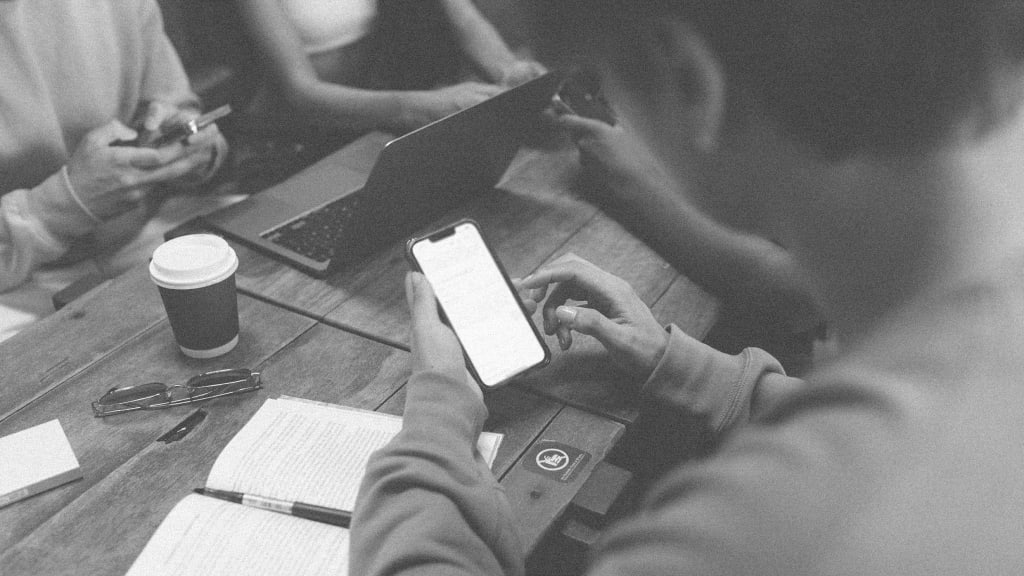Emails. Slack channels. Text messages. Zoom calls. We’re constantly bombarded with vibrations, dings, beeps, and buzzes that never clock out. “We can now be working 24/7 because we have technology that allows us to,” says Kristin Mann, a senior vice president at Raines International’s leadership and organization consulting practice.
This nonstop work culture creates a fear among employees of missing out on informational and relational opportunities in the digital workplace, according to a 2024 study from researchers at the University of Nottingham in the U.K.
All of this digital stimulation and multitasking isn’t exactly conducive to focus, either, especially when we’re trained to respond to every notification. “Our brains don’t have the space to be able to concentrate and think deeply,” says Curtis J. Morley, a business coach and the author of The Entrepreneur’s Paradox.
If you spend most of your day on a computer, you’ve probably experienced the sense of dread when you realize that you spent not one but three hours mindlessly scrolling. Instead of working on that upcoming presentation, you’ve checked emails, caught up on messages, and updated your never-ending to-do list. While this likely feels productive in the moment, you’re probably causing yourself unnecessary stress. Instead, engaging mindfully with your digital workplace can protect your well-being at work and reduce burnout, overload, and anxiety, the researchers who conducted the mindfulness study found.
Mindfulness in the workplace isn’t all about meditation—although it could include that, says Ashley Hardcastle, certified workplace mindfulness facilitator and CEO of Zesa Wellness. It’s “more of a state of being than it is something formal, so as you cultivate these practices throughout your day, it has a ripple effect,” Hardcastle says. “[Mindfulness] can increase mental clarity, focus, innovation—and can decrease blood pressure, heart rate, anxiety, and depression.” When you bring this type of support to employees, you start to see an organizational culture shift: fewer sick days, lower turnover, increased team cohesion, and improved return on investment for the company, she says.
If you’re ready to start practicing digital mindfulness, here’s how, according to experts:
Reflect on Your Digital Usage
Start with a hard look at how you use digital tools, as the 2024 study found that this reflection process can lead to effective habit change. “When you bring mindfulness into the workplace, you’re helping individuals cultivate self-awareness,” Hardcastle says. “And when they start cultivating that self-awareness, they’re able to understand more about what they need.”
Bring attention to when you are feeling discouraged, tired, overwhelmed, or fatigued—what was your digital usage that led to this point? How can you tailor that use to ease those symptoms? According to Hardcastle, one question you can ask yourself is, “When I use this particular digital tool, in what ways is it necessary and in what ways does it deter from my productivity?”
This practice shouldn’t be a one-time affair. Mann advises her clients to hold 15 minutes on their calendar every Friday for a (tech-free) reflection on the week’s learnings. You can use this time to reflect on wins and challenges—in both digital use and general work. “We often dwell on what we struggled with, completely overlooking the things we nailed,” Mann says. “So try writing down three things you excelled at and one thing you would like to work on next week.”
Set Boundaries with Your Colleagues (and Yourself)
You don’t need to be in a leadership role to set boundaries around digital use. “Be very clear with your employer of what hours you will work and what you won’t—and some jobs require more than others,” Morley says. “It’s an agreement between you and your employer. Whatever it is, stick to it and make sure you have that clearly communicated.” (Not everyone has the freedom to set this boundary, though, so if you are employed in a strict workplace, you may need to ease into this. For example, maybe you feel comfortable talking to coworkers about how important your recharge time is after work, but your overbearing boss won’t want to hear it.)
If you are in a leadership role, you can model the behavior you expect from your team. For example, Mann establishes a no-emails–on-the-weekend boundary whenever she starts a new job.
Incorporate Microbreaks
Throughout the day, get up and walk away from your screen. (Set a timer if you really need the reminder.) Take a quick stretch break, walk around the block—whatever you need to do to let your brain reset. There is no set formula for how often or for how long, and Hardcastle notes that it will vary from day to day and person to person. (For example, if you’re in the middle of a task, it may be more fatiguing to stop and rest.) A starting guideline is five minutes every hour to regain focus, but you can adapt this based on your work schedule.
If you can’t take extensive time away from the desk, microbreaks, which last from 30 seconds up to 10 minutes, are shown to boost well-being. Hardcastle uses what she calls the “stop method,” noting, “Any time that I receive a phone call or notification, I take a moment to take a deep breath. With this practice, “you’ll be surprised at how many times throughout your day you are intentionally stopping and redirecting your attention back to your breath.” These microbreaks feel achievable no matter your workload, and you can integrate them “without feeling like you’re taking a big step away from the work culture,” she says.
Mann realized that every time she would get a notification, it would take her out of the present moment. So put those tech tools to good use and customize your settings to help you stick to healthy habits. Start by turning off notifications on your Apple Watch if you have one, and try using “Do Not Disturb” mode on your phone, allowing calls only from a select few people, if necessary.
Change your notification settings on Slack when you’re in a meeting or taking a break. Set out-of-office times on Outlook so your team knows when they can reach you. Silence notifications from all nonessential apps; “it prevents that time-wastage element,” says one study participant who does this.
Take a Walk
When you’re stuck in back-to-back Zoom calls, you have no choice but to stare at a screen. But when possible, opt for a phone call instead. “I worked with a CEO in San Diego, and every time she had a staff meeting, she would go on a walk or a hike and encourage everybody to do the same,” Mann says. “You get a chance to be outside and you’re still focused on the call, but not cooped up inside all day.” Plus, this practice will keep your attention on the call instead of the three screens in front of you.
Bring Back Analog Methods
Instead of the notepad app or a Google Doc, bring back the good old-fashioned notebook and planner, Hardcastle advises. “Our neurons fire differently when we’re typing on a computer versus when we have a pencil or pen in our hand,” she says. You’ll slow down, instill calmness, and bring back your focus.
Sometimes, like during a fast-paced meeting, taking notes on paper isn’t realistic, so use your notepad to doodle instead, suggests Hardcastle, which is shown to improve cognitive performance and memory.
Be Intentional with Your Communication
With digital modes of communication like texting, we miss out on the nuanced, nonverbal cues that we get from face-to-face interactions. Rather than rapid-firing off that email while your attention is divided, pause before you hit send. If your message lacks compassion or clarity, remember that people may read your message differently than how you intended it. “Being very intentional in understanding what your impact is, particularly as a manager or leader, is part of digital mindfulness,” Mann says.
Make Time For Yourself
In our world of busy schedules and nonstop work, it can feel hard to make time for yourself. And if you continue scrolling long after your workday is over, it can contribute to burnout.
For Morley, who takes a digital detox without his phone or computer every Sunday to spend the day with his family, the weekend is a great place to set aside some screen-free time. If that’s not realistic for you, he suggests setting aside a “power hour” every morning when you can journal, make breakfast, exercise—all without your phone.
Hannah Singleton is a freelance journalist based in Salt Lake City. She reports on a variety of topics, including wellness, fitness, the outdoors, and environmental issues. You can check out her bylines on Vox, in The New York Times, GQ, The Wall Street Journal, on Well+Good, and more.
Recognize your company’s culture of innovation by applying to this year’s Best Workplaces for Innovators Awards before the extended deadline, April 12.







